The reason why a first aider would carry out compressions on an unconscious casualty that is not breathing or not breathing normally, is to take over the job of the heart, to become a manual pump, and circulate the oxygenated blood within the body to try to keep the brain alive.
In First Aid an infant is aged between 0 and 1 year old.
A child is aged between 1 year and 18 years old.
An adult is classed as 18 years old and above.
The technique is very similar in all age groups, it’s just about adopting it to the size of the casualty.
Hands are placed on the sternum/breast bone in the centre of the chest. When pressing down the first aider must ensure that pressure is on the chest bone and NOT the rib cage.
The first aider will push down a third of the depth of the chest on that casualty.
The first aider will do the compressions at a speed of 100-120 beats per minute. This has been known to be done at the same beat as the song Staying Alive.
The number of hands a first aider would use when doing the compressions is now dependant on the size of the casualty and the size and strength of the first aider.
On an adult casualty, a first aider would use the two handed technique. Ensuring pressure is going through the heel of the lower hand, pressing on the sternum, and not on the ribs.
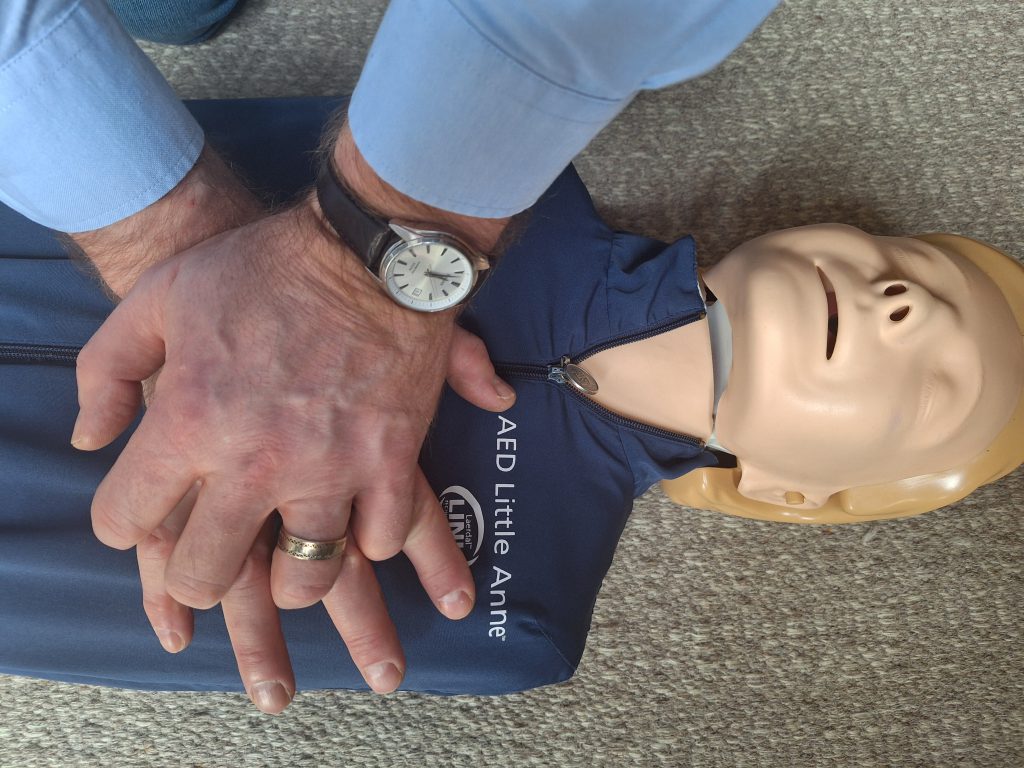
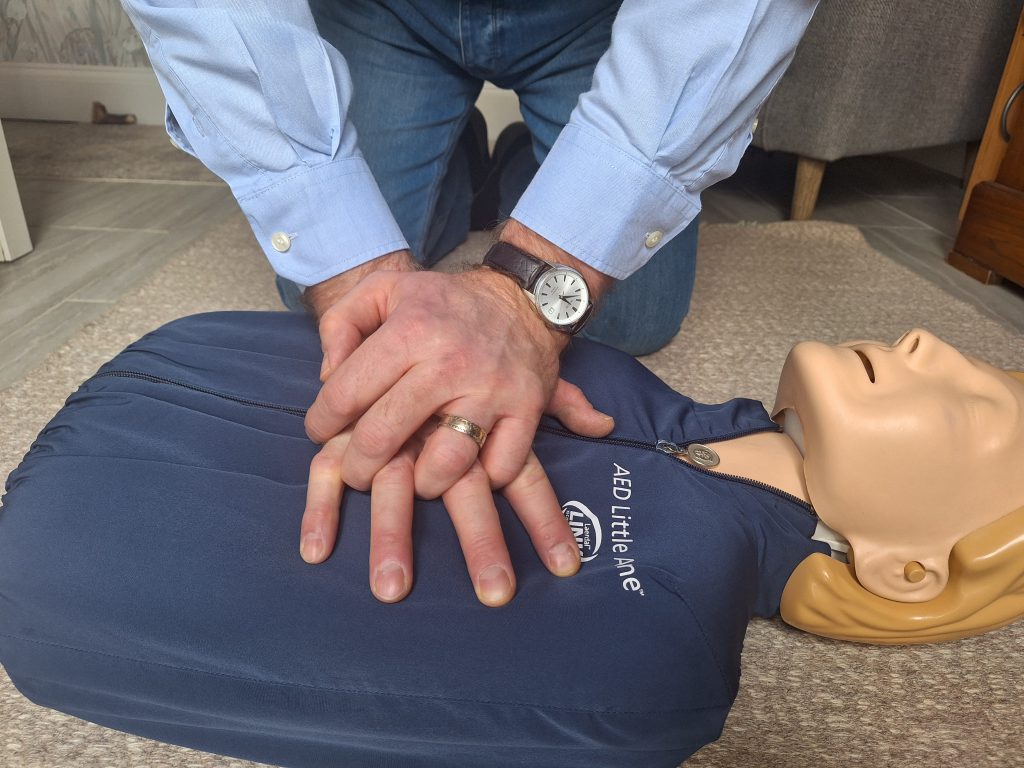
On a child, the number of hands used is dependant on the size of the child, and the size and strength of the first aider.
On a small child the first aider would use one hand. the heel of the hand pushing on the chest bone. A larger child/teenager the first aider could use the two hand technique. If the first aider is not sure, start with one hand, if they can not do it effectively then use the two hand technique.
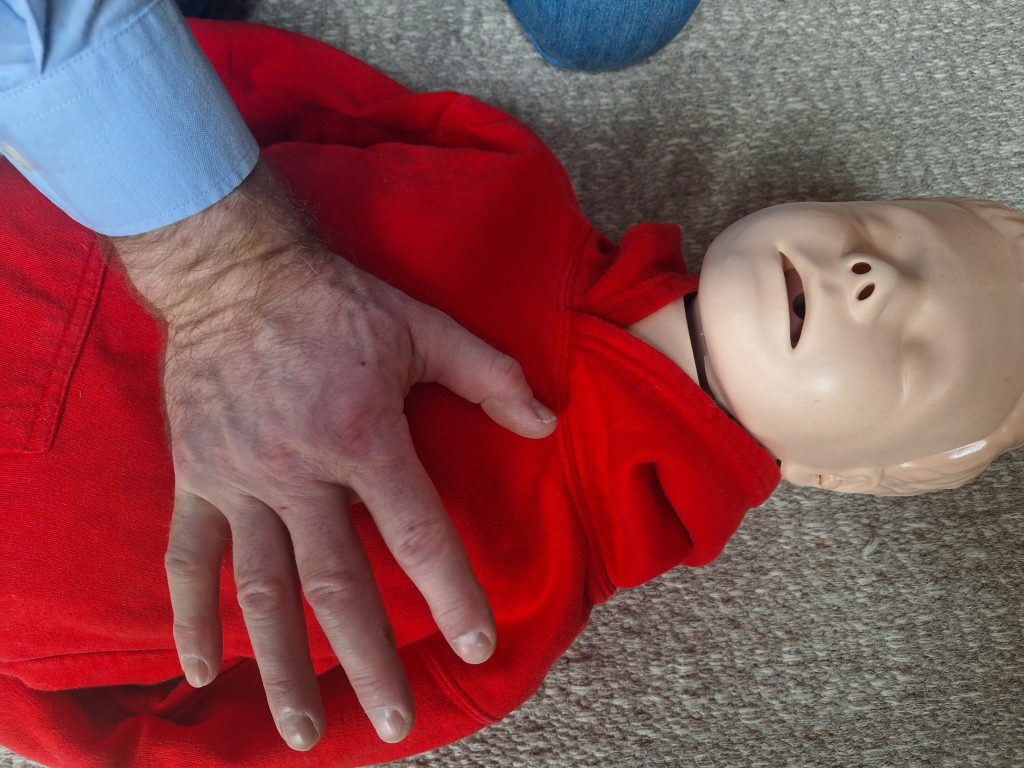
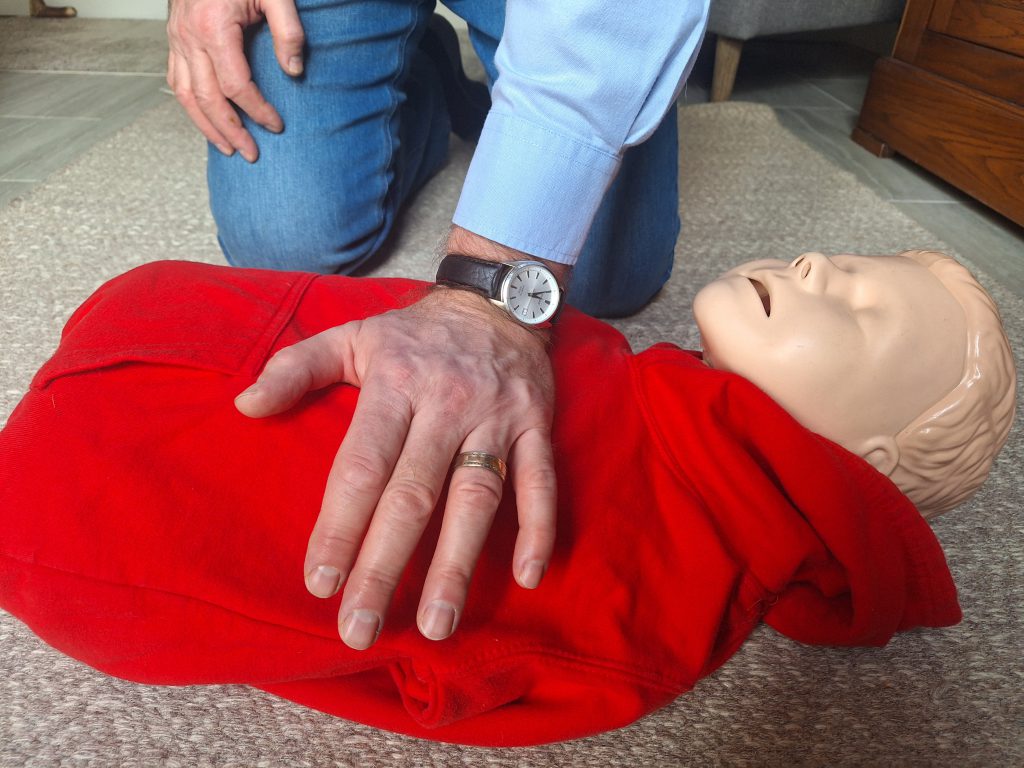
On an infant the first aider would use 2 fingers, again these are to be placed on the sternum, in the centre of the chest. Pushing down a third of the depth at a speed of 100-120 compressions per minute.
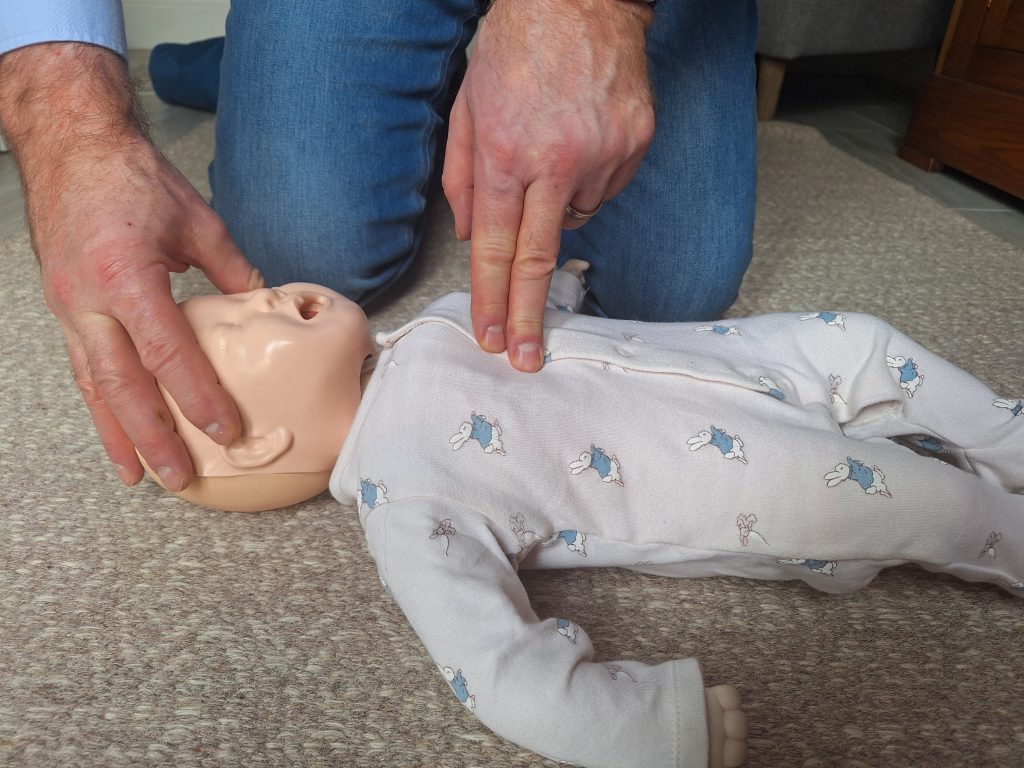
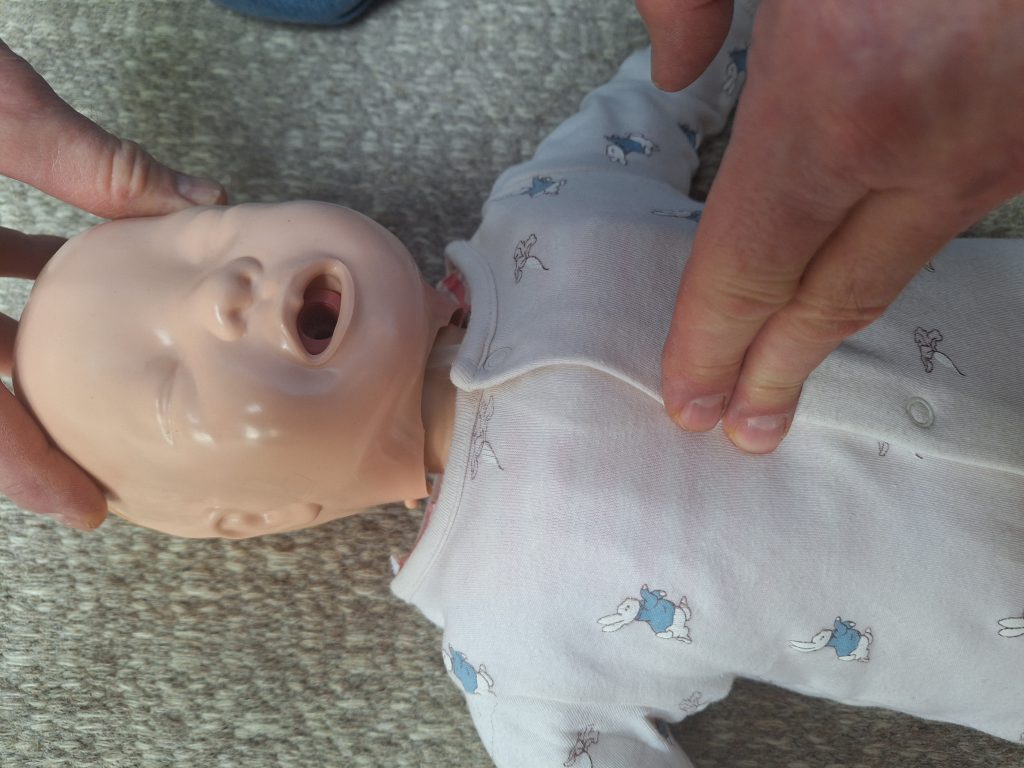
A first aider would stop doing CPR on a casualty if:
The casualty starts to breath normally
Somebody takes over from the first aider to keep the technique going
If the first aider is on their own, there is nobody else to help, and they themselves become to exhausted to carry on.
Remember CPR can save lives.